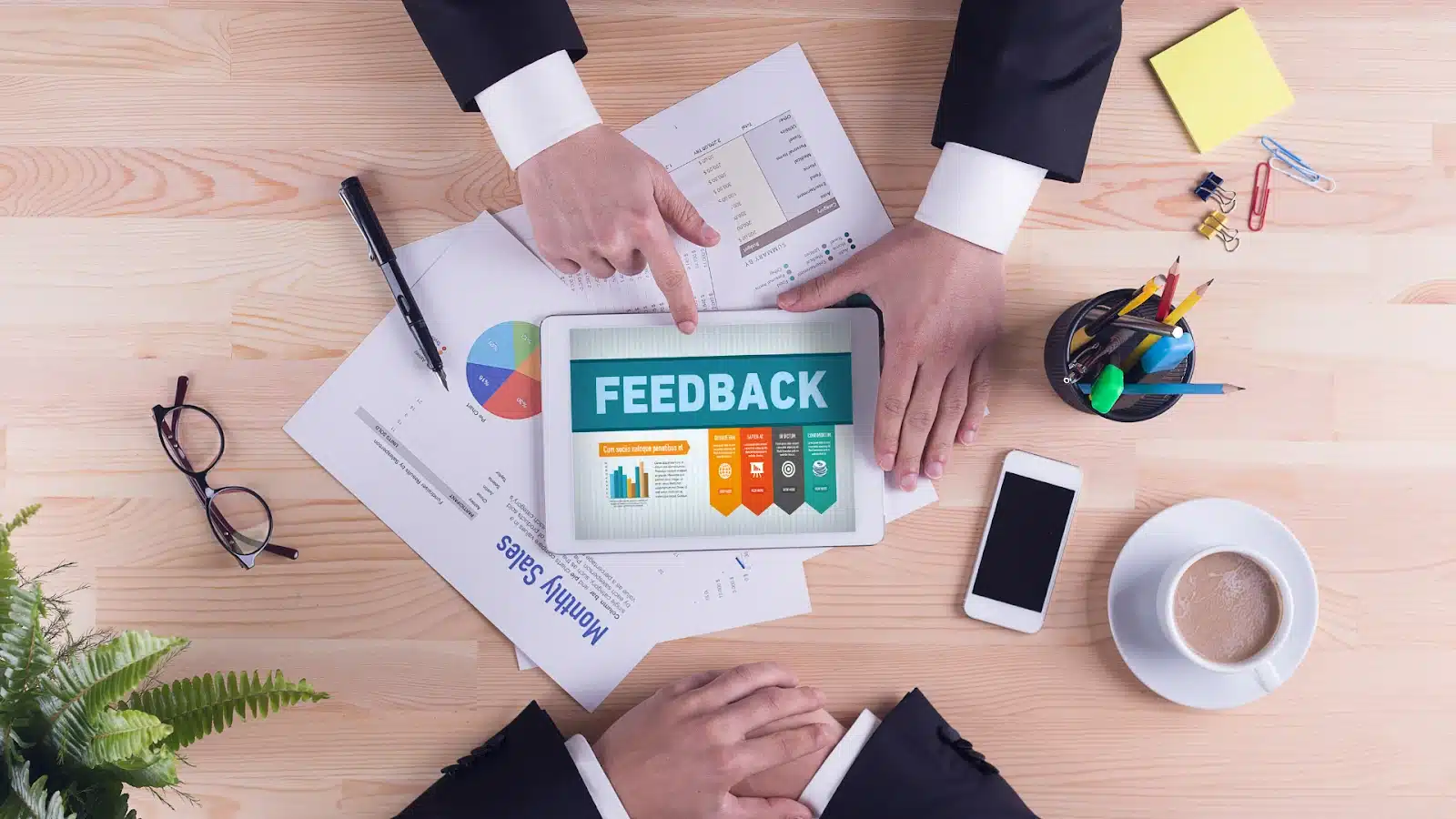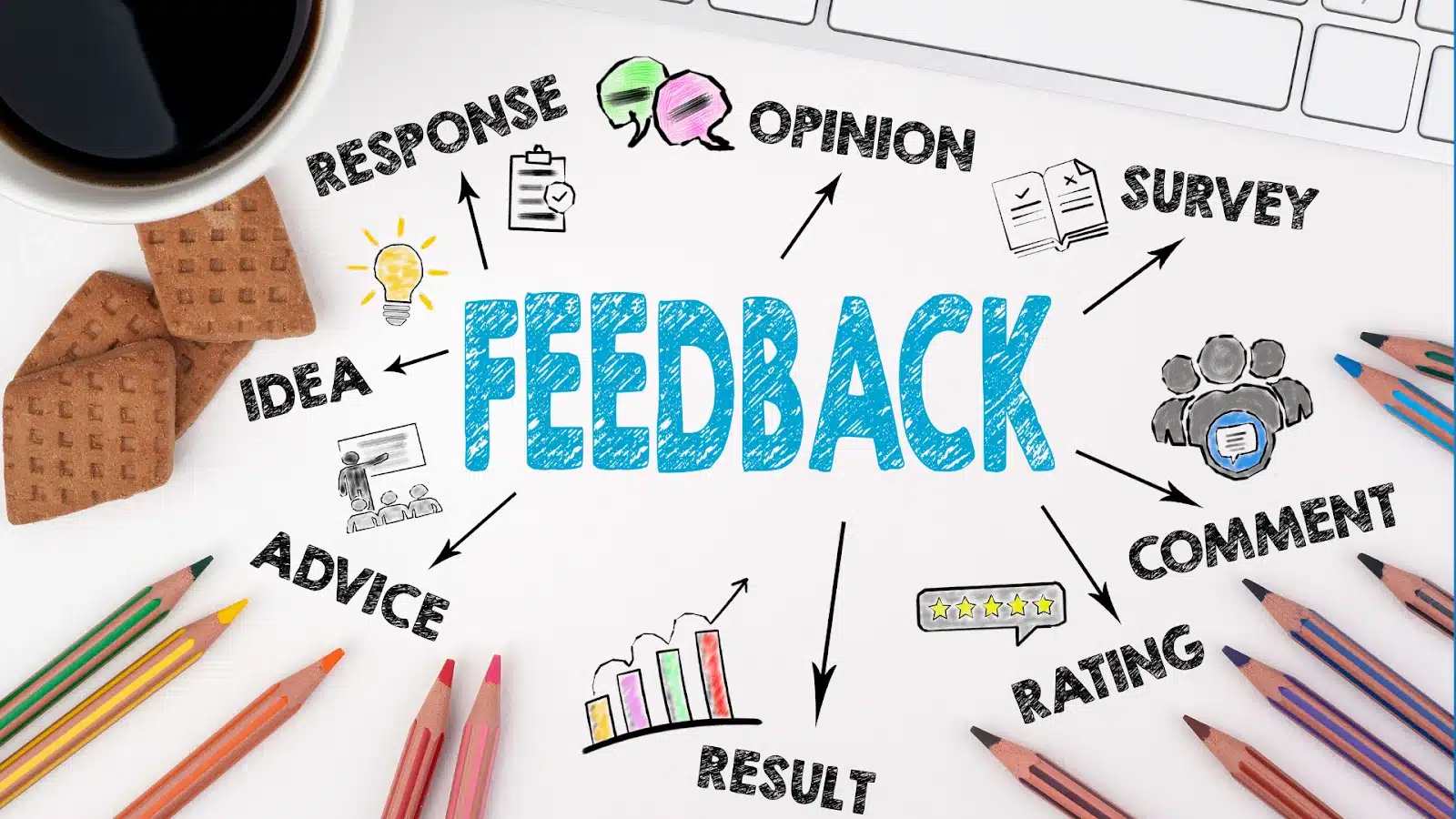
Fresh Constructive Feedback for Energized Meetings
The Importance of Constructive Feedback
Constructive feedback is essential in any professional setting, particularly during meetings. It creates an environment where team members feel valued and heard, fostering collaboration and innovation. When feedback is delivered effectively, it encourages participation and can lead to improved performance and morale. This positive cycle not only boosts individual confidence but also enhances the overall productivity of the team, as members are more likely to engage in discussions and contribute their ideas when they know their input is appreciated.
Incorporating constructive feedback into meetings enhances communication and empowers team members to express their thoughts and ideas openly. This can be particularly beneficial in a fast-paced environment, such as tech companies, where quick decision-making and adaptability are crucial. In such settings, the ability to pivot based on feedback can mean the difference between success and failure, making it imperative for teams to cultivate a responsive and agile mindset.
Creating a Feedback-Friendly Culture
To cultivate a culture that embraces constructive feedback, leaders must lead by example. This means actively seeking input from team members and demonstrating that their opinions matter. Regularly inviting feedback on presentations, projects, and processes can help normalize the practice and encourage team members to share their insights. Additionally, recognizing and celebrating instances where feedback has led to positive changes can reinforce the value of this practice, motivating others to participate in the feedback loop.
Moreover, providing training on how to give and receive feedback effectively can enhance the quality of interactions during meetings. Team members should be equipped with the skills to articulate their thoughts clearly and to respond to feedback with an open mind. Workshops or role-playing exercises can be beneficial in this regard, allowing employees to practice these skills in a safe environment. Furthermore, incorporating feedback tools, such as anonymous surveys or suggestion boxes, can also help those who may feel hesitant to speak up in traditional meeting formats, ensuring that all voices are heard and considered in the decision-making process.
Engaging Presentations: The Key to Participation
Engagement during meetings is vital for capturing valuable insights and fostering collaboration. Interactive and dynamic presentations can significantly enhance participation levels. Utilizing tools that facilitate audience engagement can transform a one-way presentation into a two-way conversation, allowing for real-time feedback and discussion.
For instance, platforms like PresEngage that incorporate SMS engagement enable attendees to ask questions and share thoughts instantly, without the need for apps or downloads. This frictionless approach encourages participation from all audience members, including those who may be hesitant to speak up in traditional settings. By creating an environment where everyone feels comfortable contributing, presenters can tap into a wealth of diverse perspectives and ideas, enriching the overall discussion.
Utilizing Technology for Enhanced Engagement
With the rise of virtual meetings, leveraging technology to facilitate engagement has become more important than ever. AI-powered platforms can provide real-time Q&A capabilities, allowing presenters to address audience questions immediately. This not only keeps the audience engaged but also ensures that no valuable insights are lost during the presentation. Furthermore, features such as live polls and quizzes can be integrated into the presentation, making it easier for attendees to express their opinions and preferences on the spot, thus fostering a sense of community and involvement.
Moreover, integrating audience intelligence and analytics can help presenters tailor their content to better meet the needs of their audience. By tracking engagement metrics, presenters can identify areas for improvement and adjust their approach accordingly, ultimately leading to more effective meetings. This data-driven strategy allows for a more personalized experience, as presenters can focus on topics that resonate most with their audience. Additionally, feedback collected during the session can be utilized to refine future presentations, ensuring that each meeting becomes progressively more engaging and relevant to the participants. As technology continues to evolve, the possibilities for enhancing audience interaction will only expand, paving the way for more innovative and impactful presentations.
Strategies for Giving and Receiving Feedback
Effective feedback is a two-way street. Both the giver and receiver must approach the process with a constructive mindset. When providing feedback, it is important to be specific and focus on behaviors rather than personal attributes. This helps to create a safe space for discussion and minimizes defensiveness. By concentrating on observable actions, the feedback becomes more actionable and less likely to be perceived as a personal attack, which can lead to a more productive dialogue.
Additionally, using the “sandwich” approach—starting with positive feedback, followed by constructive criticism, and ending with another positive remark—can make the conversation more palatable. This technique encourages openness and receptiveness, making it easier for team members to accept and act on the feedback provided. It’s also beneficial to ensure that the positive comments are genuine and relevant, as this can enhance trust and credibility in the feedback process.
Encouraging Peer Feedback
Incorporating peer feedback into meetings can also enhance the overall feedback culture. Encouraging team members to provide input on each other’s presentations or projects can lead to diverse perspectives and innovative ideas. This collaborative approach not only strengthens relationships within the team but also fosters a sense of ownership and accountability. When team members feel that their insights are valued, they are more likely to engage actively and contribute to a positive team dynamic.
To facilitate peer feedback, consider implementing structured feedback sessions where team members can share their thoughts in a supportive environment. This can be done through breakout groups or one-on-one discussions, allowing for more focused and meaningful exchanges. Additionally, providing guidelines or a framework for these sessions can help keep discussions on track and ensure that feedback remains constructive. For instance, encouraging team members to ask clarifying questions can deepen understanding and promote a culture of continuous improvement. Regularly scheduled feedback sessions can also help normalize the practice, making it a routine part of team interactions rather than an occasional event.
Turning Feedback into Action
Receiving feedback is just the first step; the real challenge lies in turning that feedback into actionable steps. After a meeting, it is crucial to review the feedback received and identify key takeaways that can be implemented in future presentations or projects. This proactive approach demonstrates a commitment to continuous improvement and can significantly enhance team performance. By categorizing feedback into themes or areas of focus, teams can prioritize which aspects to tackle first, ensuring that the most pressing issues are addressed promptly. This method not only streamlines the process of implementation but also provides a clear roadmap for future initiatives.
Moreover, following up on feedback can reinforce its importance. By acknowledging the input received and sharing how it will influence future actions, team members feel valued and motivated to continue contributing their insights. This acknowledgment can take various forms, such as team meetings dedicated to discussing feedback outcomes or even informal check-ins that highlight individual contributions. Such practices create an environment where feedback is not just a formality but a vital part of the team’s growth and evolution.
Setting Goals Based on Feedback
Establishing clear goals based on feedback can provide direction and motivation for team members. These goals should be specific, measurable, achievable, relevant, and time-bound (SMART). By setting tangible objectives, teams can track their progress and celebrate successes along the way. Additionally, involving team members in the goal-setting process can foster a sense of ownership and accountability, making them more likely to engage with the objectives set. This collaborative approach not only enhances commitment but also encourages diverse perspectives that can lead to more innovative solutions.
Regular check-ins to assess progress towards these goals can help maintain accountability and ensure that feedback is being effectively integrated into daily operations. This ongoing dialogue fosters a culture of continuous improvement and encourages team members to remain engaged and invested in their work. Furthermore, utilizing tools such as progress tracking dashboards or shared documents can enhance transparency, allowing everyone to visualize the collective effort and achievements. This visibility can serve as a powerful motivator, as team members can see how their contributions are directly impacting the team’s overall success.
Leveraging AI for Enhanced Feedback Mechanisms
Artificial intelligence has the potential to revolutionize the way feedback is gathered and analyzed during meetings. AI-powered platforms can automate the feedback process, capturing audience questions and comments in real-time and providing analytics on engagement levels. This data can be invaluable for presenters looking to improve their delivery and connect more effectively with their audience. By analyzing patterns in the feedback, AI can identify recurring themes or concerns, allowing presenters to address these issues proactively in future sessions, thereby fostering a more responsive and adaptive approach to communication.
Furthermore, AI can assist in tailoring responses to audience questions based on the specific content being presented. This ensures that feedback is relevant and directly tied to the presentation, enhancing the overall experience for attendees. With natural language processing capabilities, AI can understand the context of questions and provide nuanced answers, making interactions feel more personalized and engaging. This level of responsiveness not only boosts audience satisfaction but also encourages more active participation, as attendees feel their contributions are valued and acknowledged.

Seamless Integration with Existing Tools
To maximize the benefits of AI-driven feedback mechanisms, it is essential to integrate these tools with existing systems. Many platforms offer seamless integration with popular CRM systems and other productivity tools, allowing for a streamlined workflow. This ensures that feedback and engagement data can be easily accessed and utilized for future presentations. By consolidating data from various sources, organizations can gain a comprehensive view of audience engagement over time, enabling them to refine their strategies and improve overall communication effectiveness.
Moreover, the integration of AI tools can facilitate real-time collaboration among team members, allowing them to share insights and adjust their presentations on the fly based on audience reactions. This dynamic approach not only enhances the quality of the meeting but also promotes a culture of continuous improvement within teams. As AI continues to evolve, the potential for more sophisticated feedback mechanisms will only increase, paving the way for innovative ways to engage and connect with audiences across various platforms and formats.
Conclusion: Energizing Meetings Through Constructive Feedback
In conclusion, constructive feedback is a powerful tool for energizing meetings and fostering collaboration within teams. By creating a feedback-friendly culture, utilizing technology for engagement, and turning feedback into actionable steps, organizations can enhance the effectiveness of their meetings and drive better results.
As teams continue to adapt to the evolving landscape of work, embracing innovative solutions such as AI-powered engagement platforms can further elevate the feedback process. By prioritizing engagement and collaboration, organizations can transform their meetings into dynamic conversations that inspire creativity and drive success.
For those looking to enhance their presentation and engagement capabilities, consider exploring platforms that offer AI-powered Q&A and seamless audience participation. Start for FREE today and experience the difference that constructive feedback can make in your meetings.
Take Your Meetings to the Next Level with PresEngage
Ready to revolutionize your meetings with the power of constructive feedback and real-time engagement? PresEngage is here to help you create dynamic, interactive presentations that truly connect with your audience. With our AI-powered SMS Q&A platform, you can facilitate seamless interaction, address every question promptly, and turn every meeting into an opportunity for growth and connection. Say goodbye to the barriers of traditional engagement methods and embrace a world where every voice is heard. Start for FREE today and watch your presentations transform with PresEngage.
Present Smarter. Engage Answer Convert Close Remarkably.
Dazzle your audience with Real-Time Q&A powered by your AI Co-Presenter.(Patent Pending)
PresEngage™ makes you look brilliant by connecting with everyone, instantly.
No Credit Card Required. 100% Risk Free.
Frictionless Audience Experience GUARANTEED.






